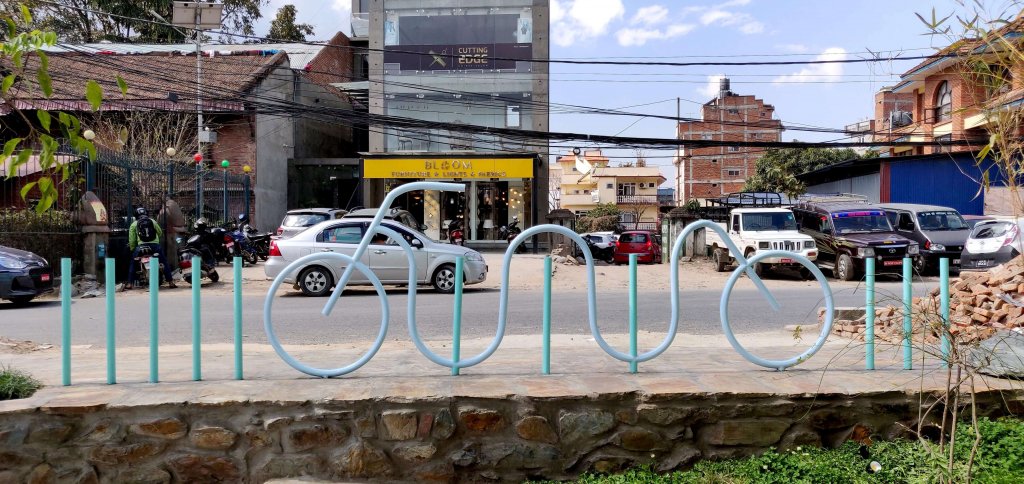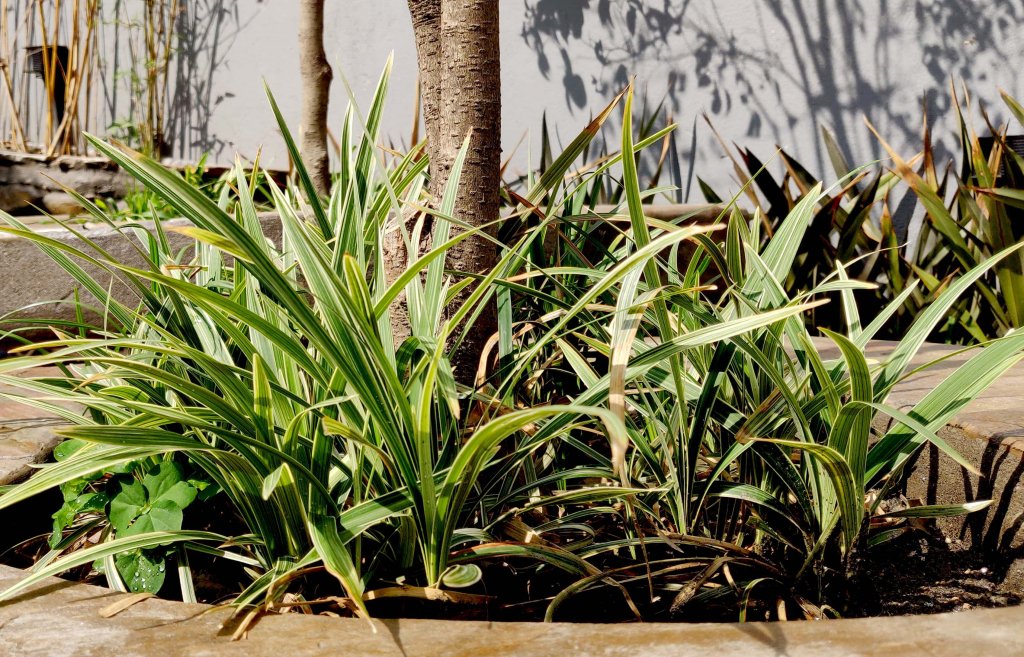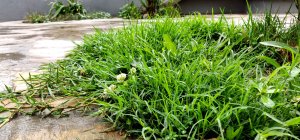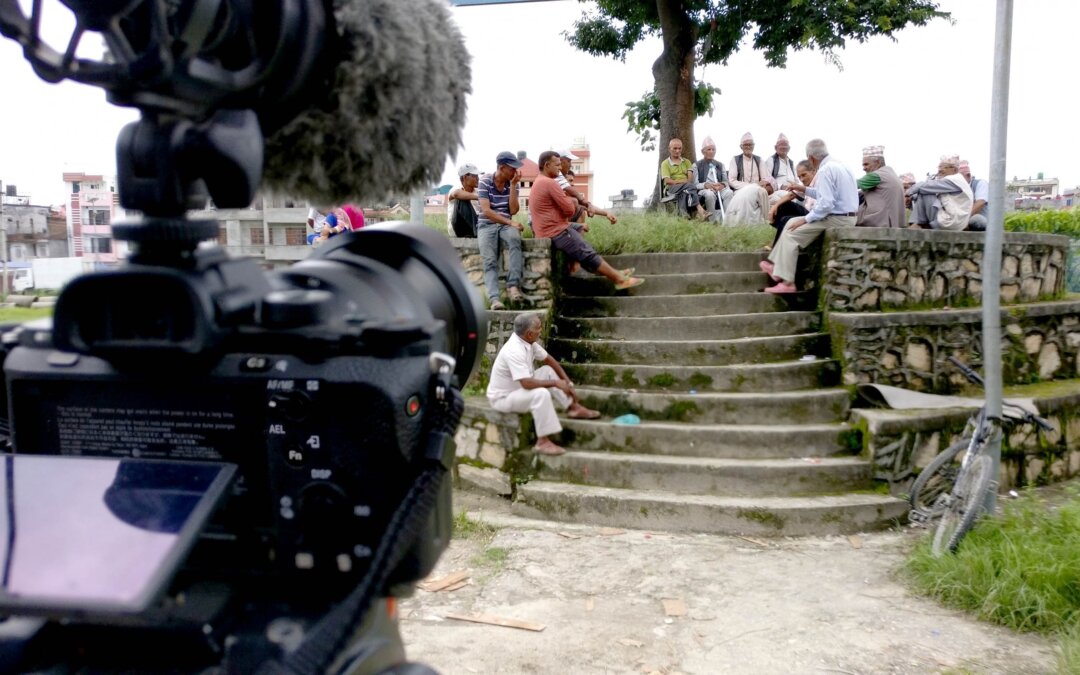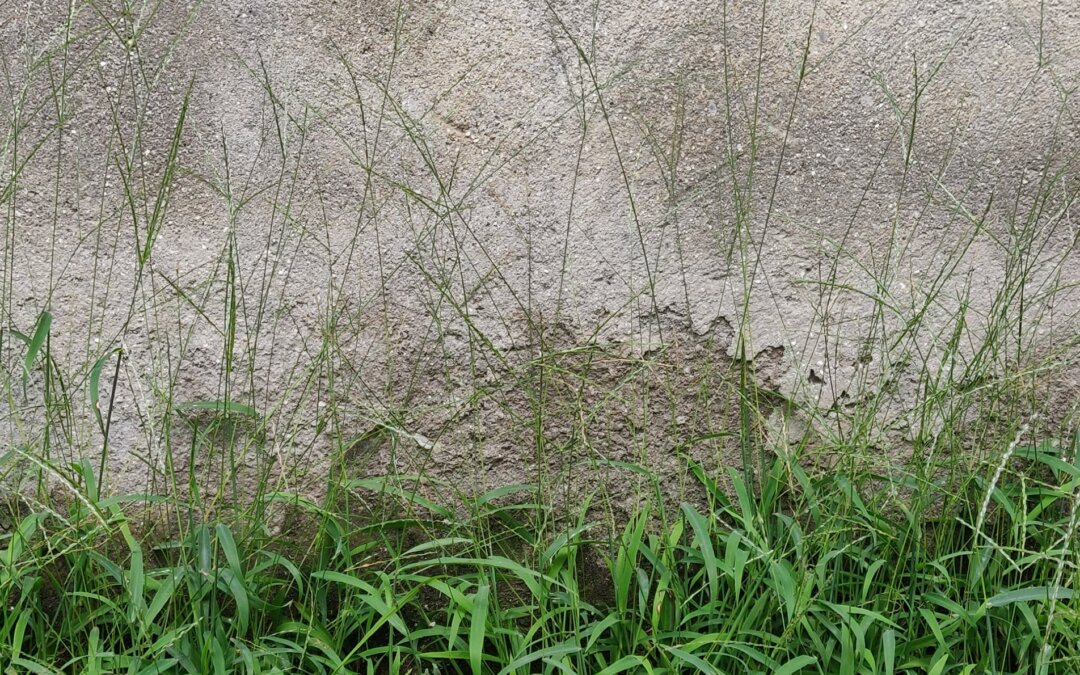A bar inspired by bicycle serves as the boundary yet invites playfulness. It further makes a statement for a
cycling-centric transportation culture
Project: A mini-Solution to Urban Regeneration.
Adopting a solution-based approach, Vriksha Foundation with the support of the Mayor’s office acquired a piece of land for creating a pocket park. The selected site for the initiative had been encroached upon for several years, the removal of encroachment was taken care of by the Mayor’s office. It is located in Pulchowk which is a commercial area, characterized mostly by grey infrastructure. Work on transforming this 800 m2 piece of land into a pocket park began in December 2019 and was completed in April 2020.
Despite many obstacles, we implanted the pocket park that became a small phenomenon. Amid a lot of vehicular movements in the adjacent street, it allows a hassle-free, passage with entrance on both sides of the road, which attracts urban commuters to take a respite a place to meet and relax. A small pocket park breathes provides breathing spaces in between the dense concretes and market forces. The project reclaimed the previously encroached site and sculpted a serpentine path. The hierarchy of pathways with a subtle transition gives a meandering experience to the passers-by. As the site is quantitatively very small, efforts have been made to balances the rigidity and limitations of the site. The 4 feet level difference of the site is connected via a ramp with a gradient slope that merges with the natural traits allowing informal sittings. The rainwater can find its natural course from the gapes between the rough-cut flagstones. We transplanted native grown-up trees of suitable species. Local-viable species which included hardy perennials and native species, local grasses sourced from peri-urban areas to change the urban greening tendencies. Although the ecological function of pocket parks is finite, they do serve to create micro-climate increase proportion of permeable surfaces, and small habitats for flora, insects, and pollinators in the city.
Many people who came to visit this park after seeing it on social media acutely felt the lack of green areas and nearby parks in their neighborhood. It attracted people to meet their friends instead of cafés that are not affordable by all. People who doubted our idea of implementing pocket parks saw cost-effective parks thriving even in less maintenance and promoting social interaction. his pilot project has added urban vitality and brought divided communities together. Now they are demanding more of such micro utopias in their vicinity. They have identified a public land next to the pocket park that we created and requested us to design this space.
The idea behind transforming these pockets of spaces is to create a network of well-planned open spaces with improved connectivity, accessibility, better ecosystem services. This tactical pilots project helped to scale up the urban greening project in Lalitpur. We have extended our works in other areas with the support of the mayor.
The park is presently maintained at zero cost due to the choice of materials plants and through voluntary care of the employees of some local businesses. This would not have been possible if we hadn’t consulted, engaged with them in the planning and execution of the project.
Location: Pulchowk Lalitpur
Design Team
Concept and Supervision: Milan Rai (Artist )
Architects: Kusum Shrestha, Prajal Pradhan Karishma Manandhar, Mahesh Maharjan (A for Architecture firm.
THE PARK IS GROWING
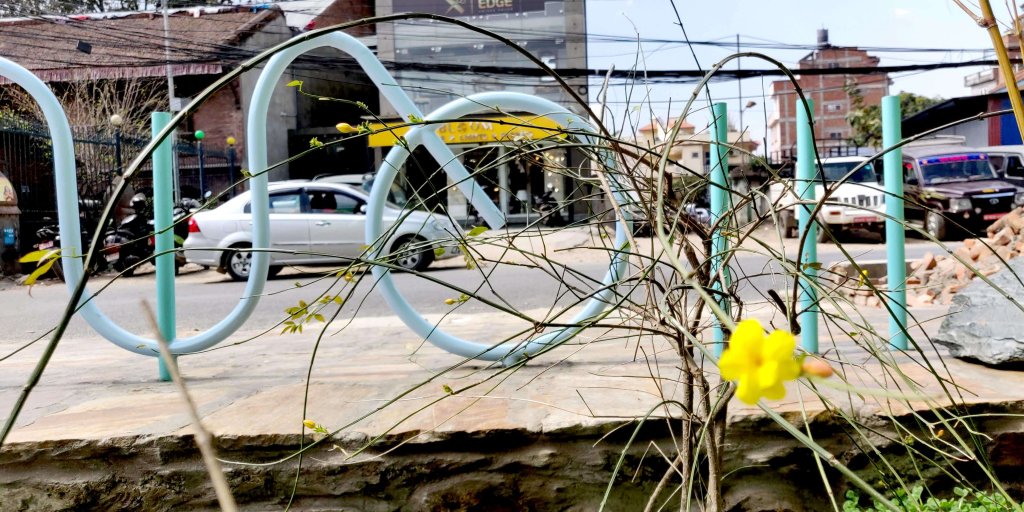
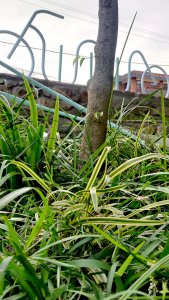
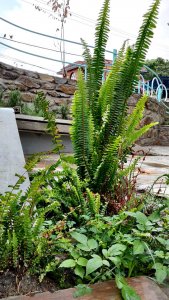
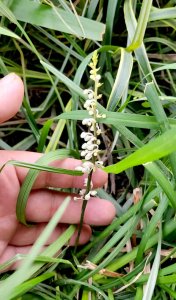
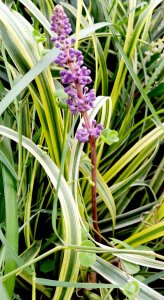
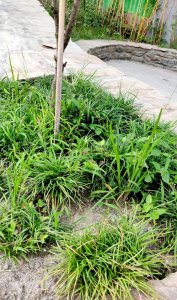
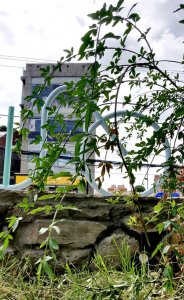
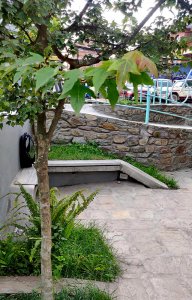
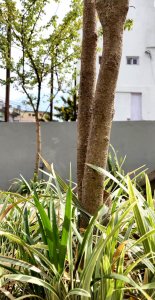
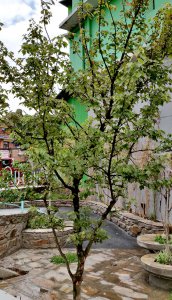
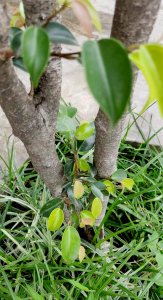
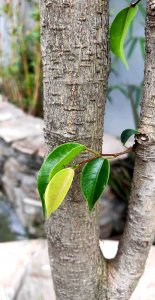
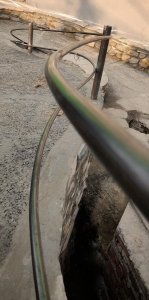
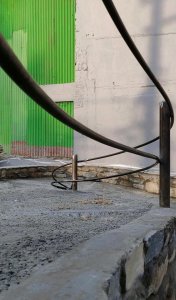
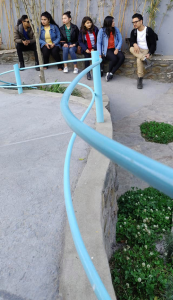

LOVE VINE
A slight change on the backside of the contemporary seating created an elevated area in the pocket park that required a guard rail. Typically, old boring repeated bar designs lack a dose of aesthetics. I took this opportunity to infuse feelings in everyday materials and design an installation that serves as a guard rail.
This curved installation follows the site-specific characters and topography of the park establishing a liaison between the people who use the park, the growing trees and the plants. The form is inspired by a plant called cascuta reflexa also known as the love vine, akashabela which drapes, twirls, and depends on other host plants. In ethnobotany, it is called a miracle plant used in Ayurvedic medicine to treat, jaundice, muscle pain, and coughs.
The installation emerges from a pit where the big tree will be planted and it continues to stretch onward representing the vigor of the plant. Art coupled with the attention in the natural world is a reflection on how cities should coexist with nature to be more liveable cities, than their current state
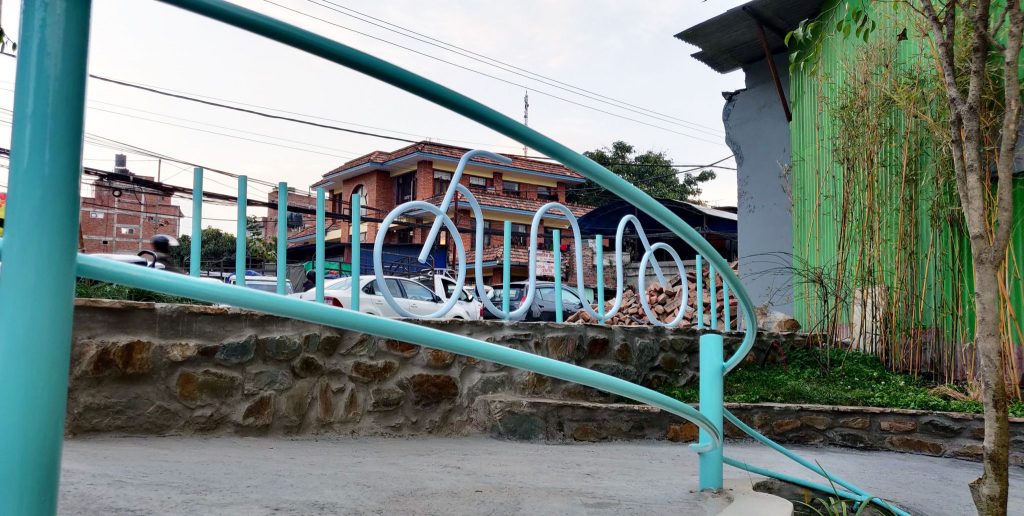
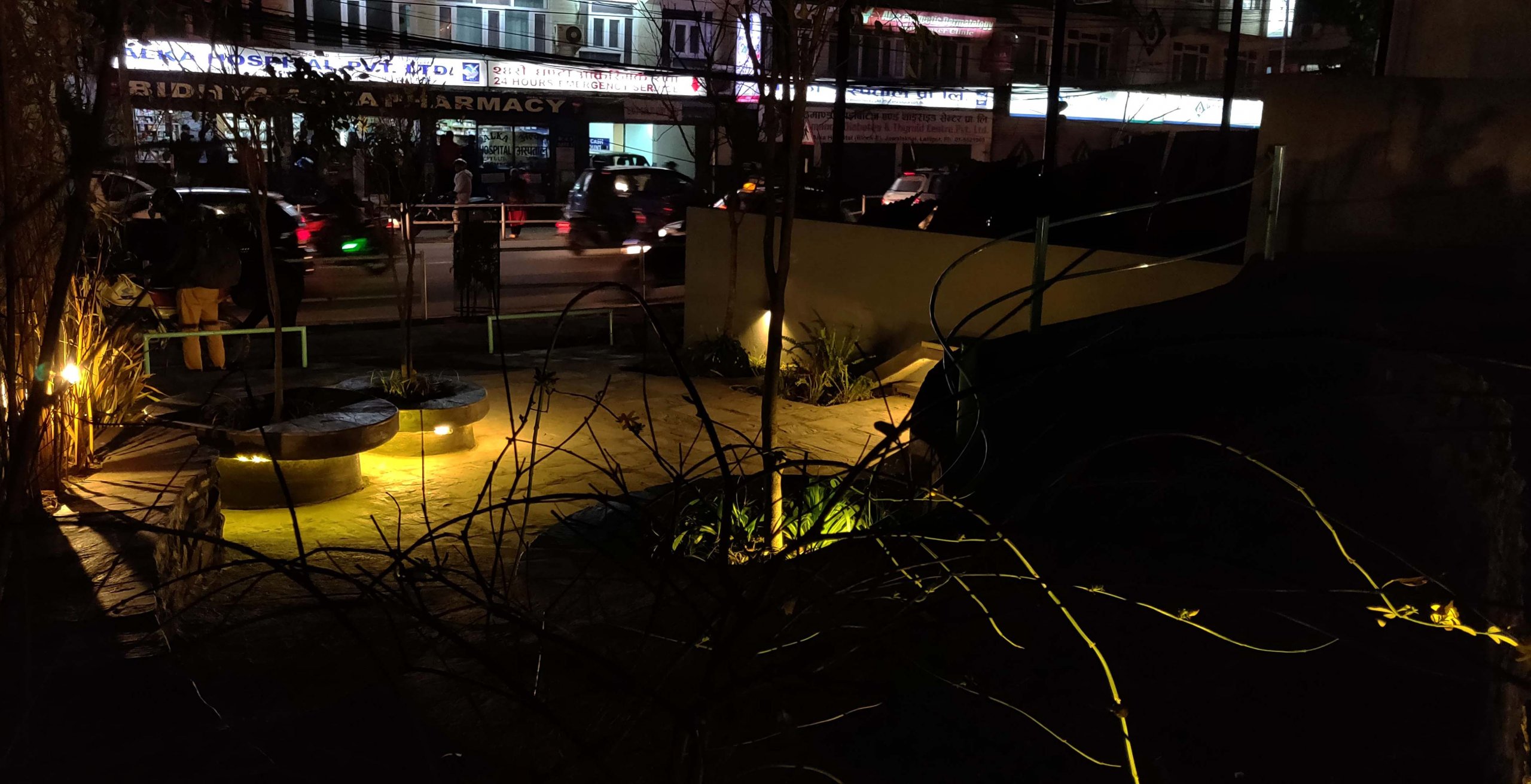
https://www.youtube.com/watch?v=kMN2_XfTHY8&feature=youtu.be

